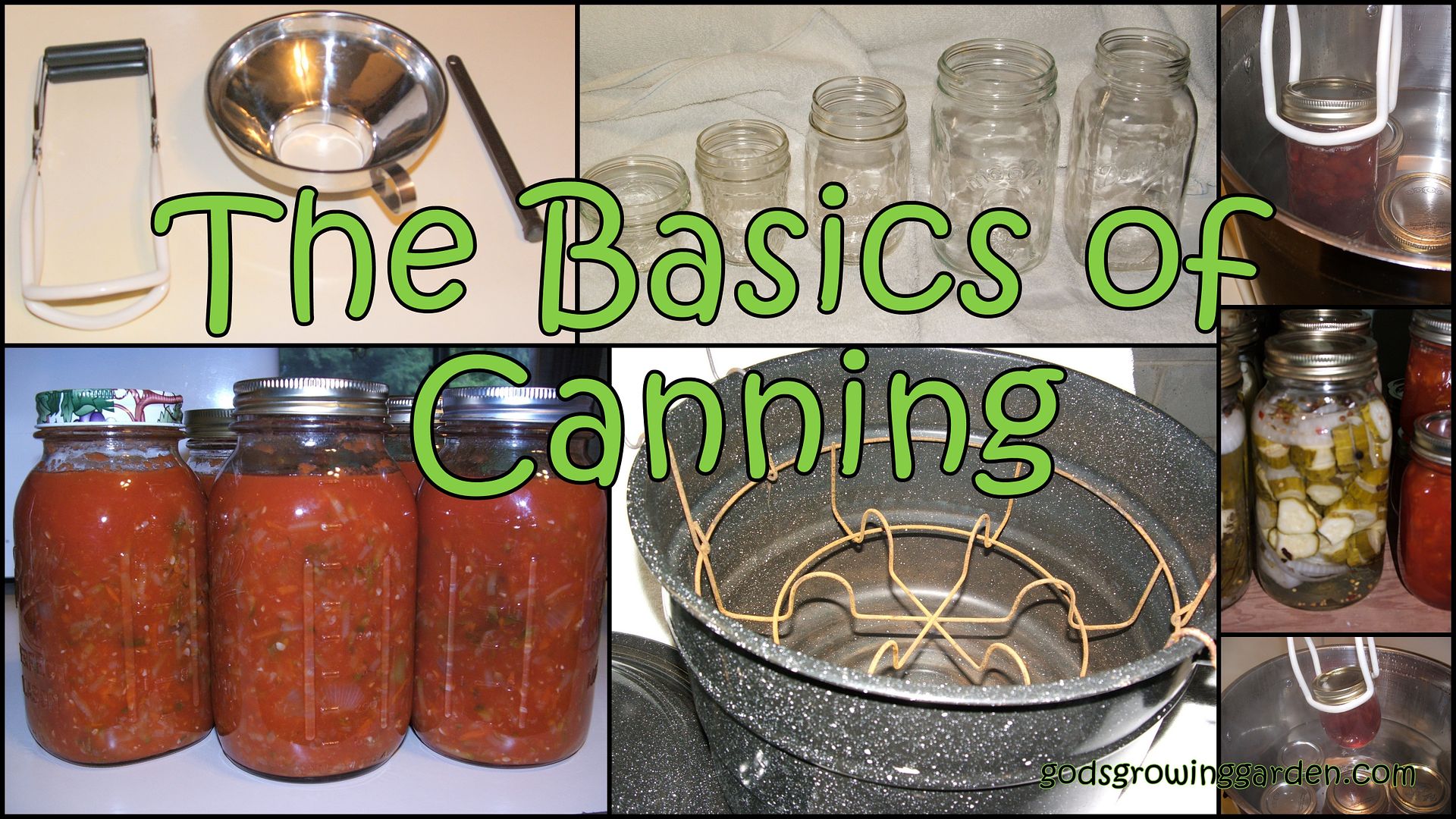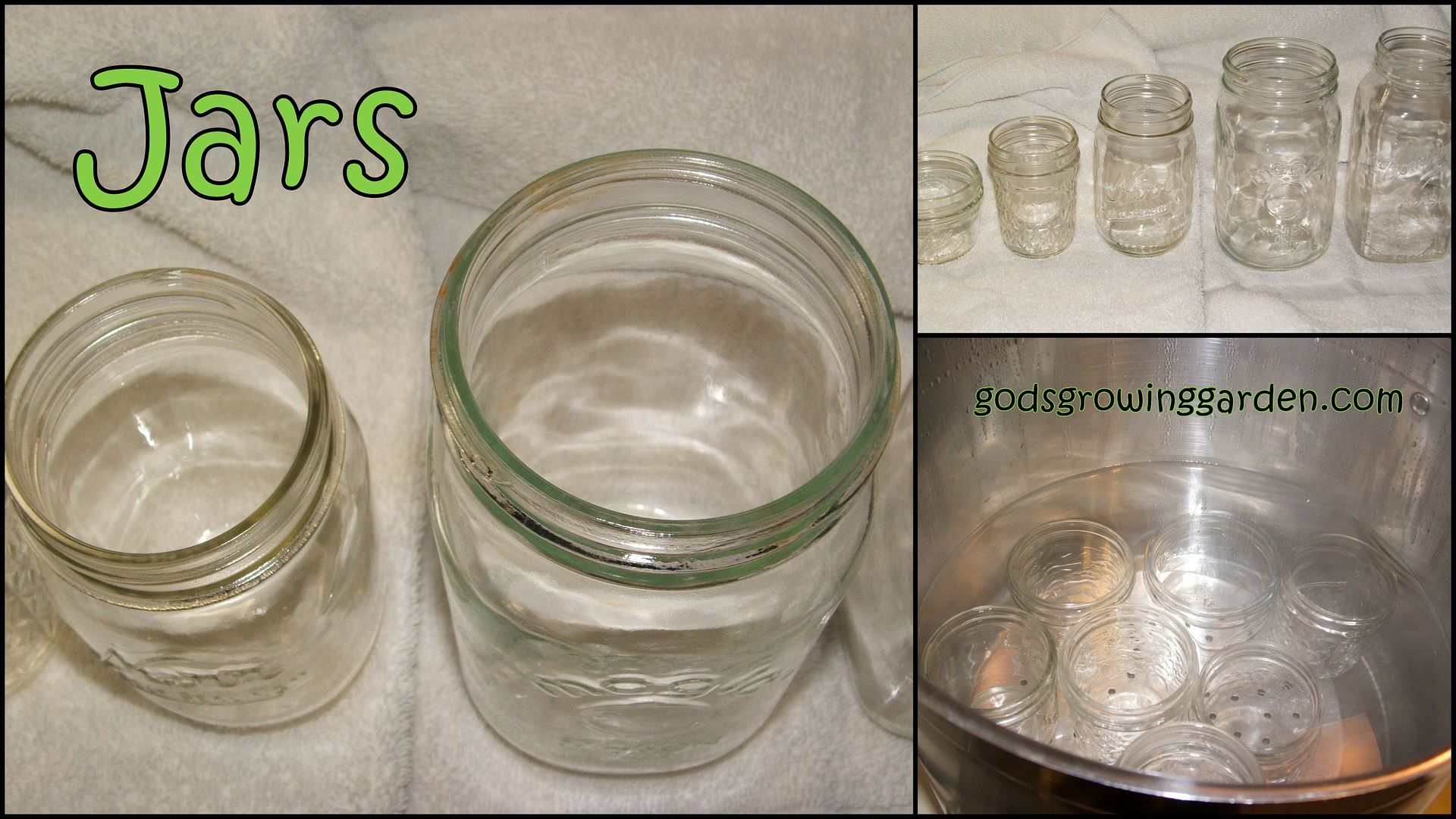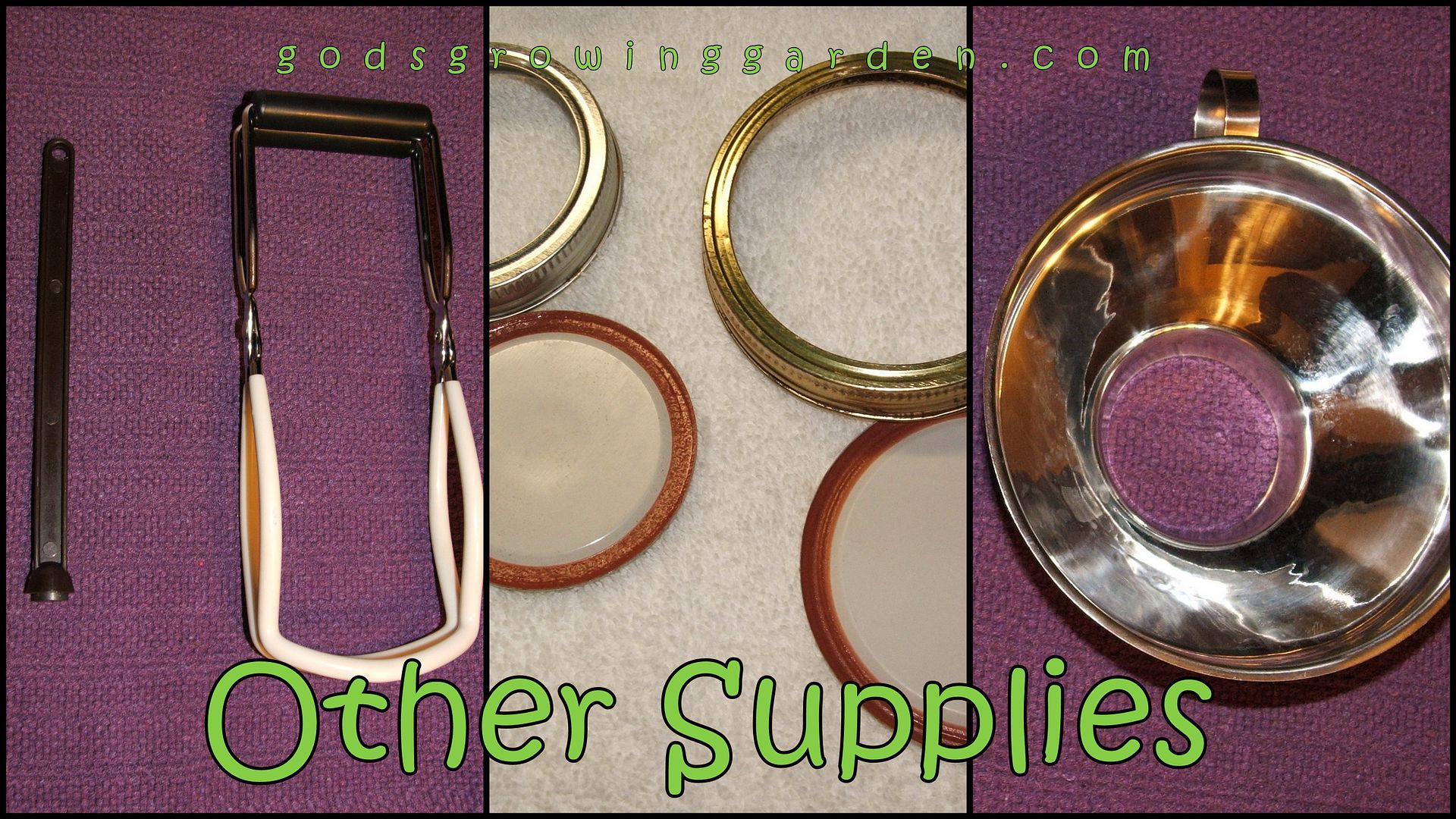
Have you noticed how expensive food is getting these days? Whenever I say that it can't go any higher it does! That's why learning to preserve your own food makes so much sense. Even if you don't have the space to grow your own food it's still cheaper to buy fresh veggies & fruit from your local farmer's market when the produce is in season and therefore inexpensive. Then, preserving this farm fresh produce will create savings in the off season. Today I will be talking about the basics of canning in my 16th "Contributing Angel post" (Thank you again to my friend Angel for allowing me to contribute to your amazing blog!)
Of course there will be an initial investment to purchase of the following canning supplies but they will last a lifetime (except for the lids - see below). Often I have seen canning supplies at garage sales and they are sold for almost nothing or many times even free!

CANNING JAR SIZES
1. Half Pint - 1 cup capacity. Mostly used for jams and jellies.
2. Pint - 2 cup capacity. Can be used for larger quantity jams and jellies but also used for salsas and relishes.
3. Quart - 4 cup capacity. Used for tomatoes, peaches, sauces, soups, juices.
Mason, Ball
and Kerr are all good canning brand names.
There are also two different sizes of the jar top
1. Regular
2. Wide-Mouth
"Water Bath Canner" & a "Pressure Canner"
Most of the canning that I do is sealed in my "water bath Canner."
There are a few veggies/fruits that can only be pressure cooker canned - an example is green beans.

1. Jar
Lifter - this handy utensil easily grips any scalding hot jar without any
worries of burning yourself. It is covered in rubber so you also don't
have to worry about the jar slipping.
2. Canning Funnel - this funnel fits perfectly onto any regular or wide-mouth canning jar and allows you to pour whatever you are canning without wasting or spilling over the edge of the jar. I prefer stainless steel but they are also available in plastic or aluminum.
3. Rings - I reuse canning rings year after year - they end up lasting 5 - 10 years. Throw away when you notice the inside of the ring getting rusty
4. Lids - You MUST use a new lid everytime you are canning to ensure food safety.
5. Magnetic Lid Remover - you can use a normal pair of cooking tongs but many times the lids will stick together and that never happens with this magnetic Lid Remover (it is also very inexpensive- only a couple of dollars).
2. Canning Funnel - this funnel fits perfectly onto any regular or wide-mouth canning jar and allows you to pour whatever you are canning without wasting or spilling over the edge of the jar. I prefer stainless steel but they are also available in plastic or aluminum.
3. Rings - I reuse canning rings year after year - they end up lasting 5 - 10 years. Throw away when you notice the inside of the ring getting rusty
4. Lids - You MUST use a new lid everytime you are canning to ensure food safety.
5. Magnetic Lid Remover - you can use a normal pair of cooking tongs but many times the lids will stick together and that never happens with this magnetic Lid Remover (it is also very inexpensive- only a couple of dollars).
Sterilizing Jars and
Lids
Before filling your
jars with whatever you are canning, the first thing to do is wash your jars in
soapy water. (My extra jars are stored in my garage so I always make
sure that the dust, bugs and whatever else is washed off the jars).
Next, boil your clean
jars. Some people only scald their jars before canning but I don't want
to take any chances, so I boil my jars and lids for 5 minutes before
canning. (I always add a couple tablespoons of white vinegar to the
boiling water - this helps keep the glass clear and this is also especially
helpful if you have hard water). Another way to sterilize your canning
jars is to run them through the dishwasher and remove them just after the
drying cycle when they are so hot that you can barely touch them. I
prefer using the boiling water method because you can do a few at a time and
you don't have to wait the entire dishwashing cycle.
Then the jars
are sterilized and they are ready for whatever produce you are
canning. I place the lids in the boiling water just before I begin
filling the sterilized jars. Once I have finished filling the jars then
the lids are ready to be used.
"Raw Pack" vs "Hot Pack"
ENJOY!!



I'm so glad that the code finally reached you! My email is so frustrating!
ReplyDeleteThanks again
Angie